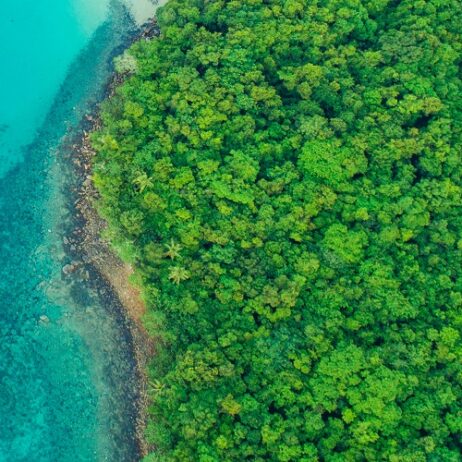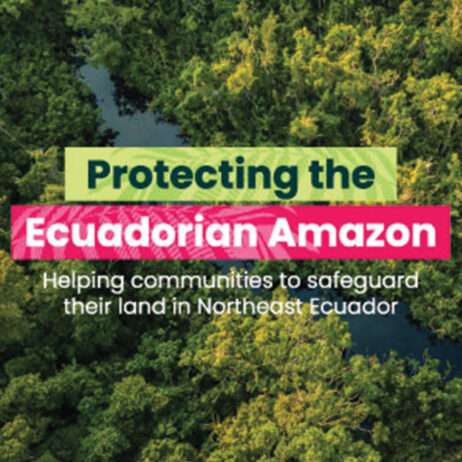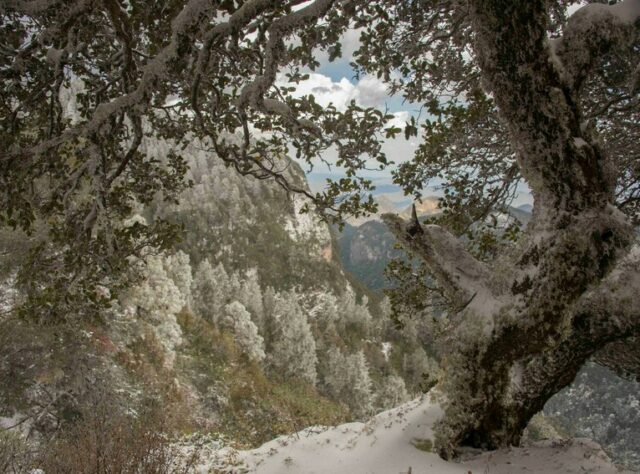
A wintery view of the Sierra Gorda, one location of a WLT Carbon Balanced project in Mexico where winter sees the forest carpeted in glistening white snow. Credit: Roberto Pedraza Ruiz
The annual United Nation’s climate summit, the Conference of Parties (COP), marks the end of another year of varying degrees of climate action. The global scientific consensus shows the single most effective action we can take to mitigate global warming is to avoid further loss of forests. This is particularly so in the tropics, where World Land Trust’s (WLT) Carbon Balanced projects are focused. Read on to hear what achievements this year has brought thanks to our partners and the organisations, businesses and individuals who support the programme.
We support our partners in Mexico, Ecuador, Guatemala and Vietnam to prevent deforestation through Carbon Balanced projects. These are based on a Carbon Balanced Standard that ensures all projects can benefit from long-term, sustainable finance. The programme is funded by a diverse range of organisations, individuals and businesses. In the longer-term, the progress of the programme will be measured by how much each entity’s requirement for carbon credits decreases over time as transformative action is taken and impacts are reduced.
Taking action in the face of urgency
This year has brought yet more unprecedented extreme weather events. Amongst these have been deadly heatwaves in Mexico, leading WLT Mexican partner Grupo Ecológico Sierra Gorda (GESG) to describe this year as “the worst since records in Mexico began”. Each fraction of a degree of warming has severe consequences. Carbon Balanced aims to support the transition to a less carbon-intensive society by helping businesses and individuals to shift their practices and mitigate their unavoidable residual emissions. Now is the time to take stock and share what our community of Carbon Balanced partners and supporters have achieved in 2023.
Caribbean Coast, Guatemala
The Carbon Balanced project in Guatemala is a REDD+ project which avoids carbon emissions through ensuring that mature forest habitat is protected for a great diversity of species. The project is in Caribbean Guatemala, part of the Mesoamerican Biological Corridor. Around 80% of lowland forests in Caribbean Guatemala has been lost to cattle ranching, slash-and-burn agriculture, and banana, oil palm and rubber plantations. The Caribbean Coast project is protecting and restoring vital forest ecosystems in Guatemala’s Department of Izabal, providing habitat for over 127 mammal species, and more than 359 species of birds.
There are 111 communities living inside the project zone, 69 of which are from the Maya-Q’eqchi’ ethnic group, 40 are mestizo communities and two are mixed mestizo-Q’eqchi’ communities. This project makes infrastructure and resources available to improve health, education, and livelihoods. This raises local people’s quality of life and wellbeing, an essential goal of this project. The communities that FUNDAECO work with own around 8% of the forest within the project area and have a central role in forest conservation.
So far, 2023 brought the following achievements for climate, biodiversity and communities:
- The ongoing protection of 59,524 hectares of land resulting in avoided deforestation of 17,728 hectares to date.
- Conservation of a migratory corridor, an Important Bird Area, two Ramsar wetland sites and two Alliance for Zero Extinction sites.
- Monitoring of threatened bird and amphibian species.
- Participatory methods for forest protection have been expanded, with 75 community forest patrols taking place over the year.
- Over 4,000 children participated in conservation and environmental educational activities throughout 2023.
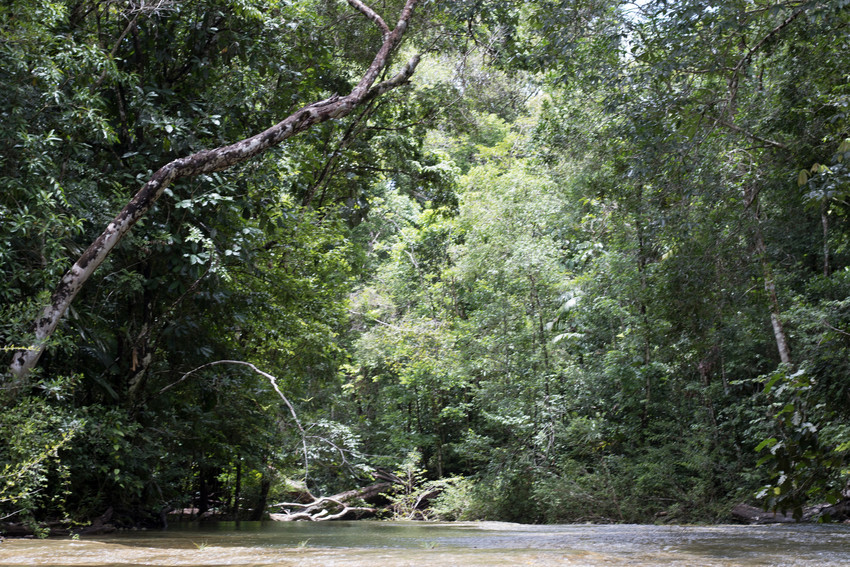
Healthy waterways have a central role in the functioning of Guatemala’s Caribbean Coast project. Credit: Nick Finch
Nangaritza, Ecuador
WLT partner Naturaleza y Cultura Ecuador (NCE) have been working to restore degraded forest in Maycú Nature Reserve. Much progress has been made with biodiversity monitoring in the area too, including several recordings of species not found before in the reserve. The NCE team have also been working with the Shuar Indigenous communities to strengthen the role of community in this forest conservation project. Some key achievements this year include:
- Surveys of restoration areas managed under the programme concluded an 82% survival rate of planted trees.
- Maintaining a plant nursery to restore degraded areas in the reserve, from which 3,000 seedlings have been planted out and 37,000 saplings cared for.
- University researchers have been monitoring key indicators species including the newly discovered snake, Welborn’s Snail-eating Snake (Dipsas welborni).
- Scientists described a new bat species, the Lesser Yellow-shouldered Bat (Sturnira boadai), classifying it as Endangered due to its restricted distribution in forests surrounding Maycú.
- An agrobiodiversity fair was organised with Shuar women from three different communities exhibited local varieties of plants grown on their traditional farms.
- NCE provided materials and equipment to people in Yayu, Yawi and Saar entsa communities to promote agroecological production in traditional gardens to help with food security.
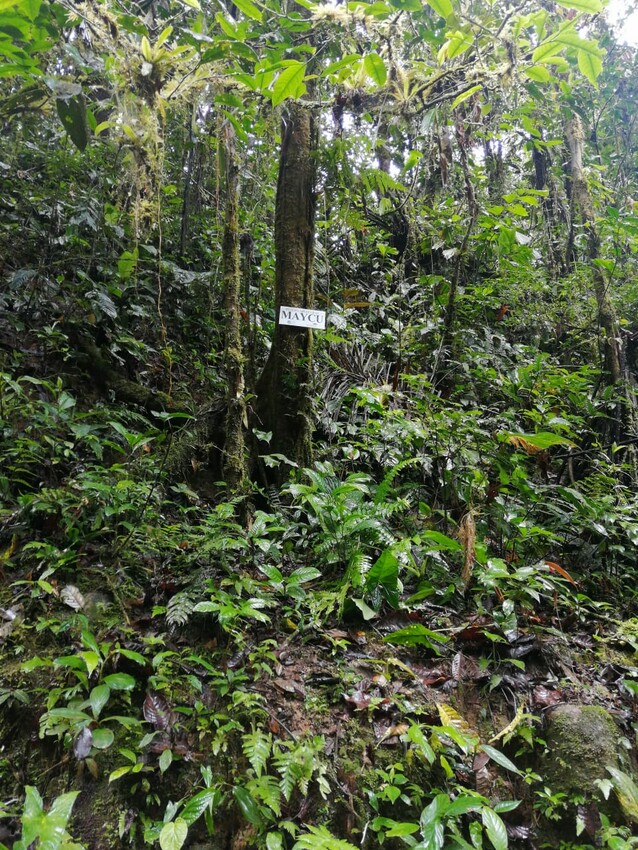
The Maycú reserve is home to several species which are newly recorded by science. This includes the Welborn’s Snail-eating Snake (Dipsas welborni). Credit: NCE
Xilitla and Sierra Gorda, Mexico
WLT partner Grupo Ecológico Sierra Gorda (GESG) has been busy working on its two Carbon Balanced projects in Xilitla and Sierra Gorda in Mexico. In Xilitla, GESG staff have been working to protect the temperate and cloud forests of Sierra de Xilitla in the Sierra Madre Oriental mountains from significant threats posed by forest fire, cattle grazing and timber harvesting. They do this in partnership with the community Ejidos which is a community-based forest management system based on communally held village lands. This project also emphasises the role of community-led education for forest conservation.
Meanwhile, in Sierra Gorda, GESG have been battling at the forefront of climate crisis in action, with the worst rainy season recorded to date having affected the project area, as well as long-lasting heatwaves. Despite the erratic weather, GESG made some impressive progress this year in its Carbon Balanced project. Across both Xilitla and Sierra Gorda, GESG achieved the following during 2023:
In Xilitla, successful conservation of community managed forests was evidenced through numerous species sightings. These included Margay (Leopardus wiedii, NT), Puma (Puma concolor, LC), and Bigfoot Splayfoot Salamander (Chiropterotriton magnipes, CR).
- In Sierra Gorda, GESG recorded a regionally unprecedented sighting of the Scaly Cholino Antbird (Grallaria guatimallensis) in the Hoya del Hielo reserve, a sign of a well-conserved cloud forest.
- Between February and March, over 100 environmental education classes took place in Xilitla across all four Ejidos, with a total of 647 students participating.
- GESG delivered wildfire prevention posters to schools in the four Ejidos of Xilitla and neighbouring areas.
- In Sierra Gorda, funds have supported a trained community fire-fighting brigade which helps prevent, mitigate, and manage wildfires if they break out in the reserve – events that are rising with climate change.

The Big Splayfoot Salamandar found in the Xilitla Reserve in Mexico. Credit: Roberto Pedraza Ruiz
Khe Nuoc Trong, Vietnam
This project is within one of the least disturbed areas of lowland tropical moist forest remaining in central Vietnam. Since the beginning of the year, Viet Nature Conservation Centre (Viet Nature/VNCC) and local partner Dong Chau – Khe Nuoc Trong Management Board have been busy increasing patrolling, forest protection and biodiversity monitoring. In the first three months of 2023, Viet Nature and its partner noted a decline in the number of wildlife snares found in the forest by 430 compared to the same period in 2022. This is thanks to the increased capacity for monitoring of the forest by rangers. Viet Nature staff were also pleased to announce that no cases of land encroachment or illegal logging activity were found this year. Thanks to Carbon Balanced, the project has been able to offer training for forest rangers to learn about camera trap surveys, monitoring of illegal logging, and snare monitoring methods to further enhance patrolling activities.
At a glance, the successes of 2023 entail the following:
- Removal of 3,082 traps and snares in the forest which has ensured that key species such as the Critically Endangered Sunda Pangolin (Manis javanica) and Large-antlered Muntjac (Muntiacus vuquangensis) avoid this indiscriminate poaching.
- Between 2,200 and 5,000 kilometres of forest has been patrolled by forest rangers every quarter this year.
- Installation of 40 camera trap devices which helped confirm the continued presence of multiple threatened species such as the Endangered Crested Argus (Rheinardia ocellata).

The Red-Shanked Douc Langur is found in Khe Nuoc Trong. Predominantly arboreal animals, their future depends on the prevention of further forest loss. Credit: VNCC
Carbon Balanced provides quantified mitigation for greenhouse gas emission increases. It does this through retaining and restoring one of our home planet’s best carbon sinks– standing forests. Not only do they store and sequester carbon, but mature forest ecosystems also urgently need protection due to their ability to sustain life. Our programme is funded by organisations and individuals who want to do business differently; to make caring for nature a core part of decision-making rather than as an afterthought. Find out more about Carbon Balanced and how you can make a difference as an individual or an organisation here.
